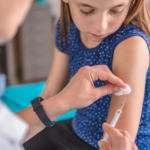The unsolved anthrax murder mystery
By Laura H. Kahn | March 23, 2011
The US public health system has serious vulnerabilities, and one major problem is identifying and responding to public health crimes.
The 10th Amendment of the US Constitution grants states the legal authority and responsibility for public health, but the Constitution was written a century before the germ theory of disease was conceived of by Louis Pasteur and Robert Koch. The framers of the Constitution had no concept of microbial pathogens; in the eighteenth century, all medicine had to offer was leeches and lancets.
The investigation into the 2001 anthrax attacks is a case in point. The National Academy of Sciences (NAS) recently published its report on the scientific methodologies used in the FBI investigation into the anthrax-laced letters that killed five people. The NAS committee of experts, which was asked to review only the unclassified scientific aspects of the investigation, concluded that despite the FBI’s years of work, the origins of the Bacillus anthracis spores used in the attacks could not be determined with certainty.
Finding this outcome unsatisfactory, Democratic Rep. Rush Holt of New Jersey reintroduced legislation to create an independent congressional commission to review the entire crisis and make recommendations on how to prevent future bioterrorist attacks. He has also requested another evaluation of the FBI’s scientific investigation, to be carried out by the Government Accountability Office (GAO).
Unsolved mysteries. The anthrax letters should be viewed in the larger context of bioterrorist attacks and public health crimes in general: They are extremely difficult, sometimes impossible, to solve. (Note: I use the terms “bioterrorist attacks” and “public health crimes” interchangeably in this column.)
In 1982, seven people in the Chicago area died after taking Extra-Strength Tylenol capsules that had been poisoned with cyanide. The FBI has spent years investigating this public health crime, yet it has not made a single arrest. The Tylenol murders remain unsolved; however, in response to the crimes, federal anti-tampering laws and tamper-proof packaging of over-the-counter medications have helped prevent copycat crimes.
In 1984, 750 people fell sick with Salmonella after eating at restaurants in Wasco County, Oregon; 45 people were hospitalized. Local citizens immediately suspected foul play, but the Centers for Disease Control (CDC) put the initial blame for the outbreak on unsanitary food handling. But the illnesses had been caused by the intentional contamination of salad bars with Salmonella typhimurium by Bhagwan Shree Rajneesh cult members — a crime that would never have been recognized had the cult’s leader not accused some of his followers, one year after the fact, and insisted on further government investigation. Perhaps because there were no deaths, this public health crime did not lead to a prompt criminal inquiry that could have spurred improvements to public health and law enforcement capabilities in responding to future incidents. (The intelligence community did take the event seriously in terms of bioterrorism risks and other potential groups of concern operating in the United States.)
During the 2001 anthrax attacks, the initial cases of cutaneous anthrax (when the spores infect broken skin) were undiagnosed until after cases of inhalational anthrax (when spores are inhaled and infect the lungs) were identified and publicized.
What these bioterrorist attacks/public health crimes have in common is a delay in the recognition of the event itself. The lone ranger or the subversive group can carry out the deed, hide or destroy the evidence, and disappear long before anyone recognizes the problem. It can take time for people to become sick after being infected with a pathogen or after consuming a tainted product; it can take time for them to seek medical care; and unfortunately it can take much longer for any crime to be identified.
Responding in time. Astute clinicians need to be equipped with the knowledge, skills, and tools that will allow them to quickly recognize the signs of a public health crime.
In the inhalational anthrax and poisoned Tylenol cases, recognizing that the events had a criminal origin was relatively straightforward; both episodes immediately raised red flags. However, in the case of the Salmonella poisonings, the criminal element was not obvious. Patterns of commercial distribution of food products and produce can easily confuse efforts to link events with criminal behavior. Recognizing that an outbreak has a suspicious origin is difficult and requires diligent surveillance, careful specimen handling, sophisticated laboratory studies, and forensic investigations, which can include molecular characterization of the responsible microbe (DNA “fingerprinting”) and analysis of other materials that may have been mixed with the microbe during its preparation for release.
Yet even with careful specimen collection, it can be very difficult to use microbial forensics to identify the source of a bioterrorist attack — especially if the perpetrators used naturally occurring pathogens — without global data and coordination. The pathogens that the United States lists as “select agents” — biological agents and toxins that potentially pose severe public health threats — are naturally occurring and available around the world. It might be easier to identify and trace genetically altered pathogens, but perpetrators could still destroy evidence before an attack was recognized. Regardless of pathogen origin, in any public health crime, response time is of the essence.
Unfortunately, the piecemeal US public health infrastructure hinders rapid response. I’ve written about the need to federalize public health as an important strategy to improve responses to naturally occurring outbreaks, to say nothing of acts of bioterrorism. The 2006 Pandemic and All-Hazards Preparedness Act mandates the creation of a nationwide electronic outbreak detection system, but progress has been slow and fragmented. A March 2011 GAO report found that despite millions in spending, the Department of Health and Human Services still had not even developed a “strategy that defines goals, objectives, and priorities and that integrates related strategies to achieve the unified electronic nationwide situational awareness capability.” Furthermore, according to the GAO, five years after the 2006 act, health officials are still “limited in their ability to electronically collect, analyze, and share information needed to enhance public health situational awareness and improve the effectiveness of their efforts to prepare for and respond to public health emergencies.”
Federalize public health. The GAO finding should not be surprising, since federal health officials delegate decision-making authority (within limits) to state and local public health authorities to set their own priorities for spending federal dollars. The 10th Amendment of the US Constitution grants states the legal authority and responsibility for public health, but the Constitution was written a century before the germ theory of disease was conceived of by Louis Pasteur and Robert Koch. The framers of the Constitution had no concept of microbial pathogens; in the 18th century, all medicine had to offer was leeches and lancets.
In the 21st century, public health must be considered an integral part of national security, a federal responsibility. Ensuring the safety of the interstate and international transport of food is one important example; infectious disease outbreaks can and do cross state lines and affect trade. Public health must become a federal responsibility, allowing for federal involvement and direction at the state level in order to detect emerging episodes of naturally occurring diseases, as well as public health crimes. Federal influence is enabled today via funding streams that, though helpful, are fraught with delays.
The current structure ensures that the epidemiologic arm of any investigation will be delayed. What is needed are experienced epidemiologists stationed in CDC field offices around the country who can conduct active disease surveillance in close collaboration with state and local public health officials. And by working closely with healthcare professionals (including physicians and veterinarians), hospitals, and laboratories, these epidemiologists would be in a good position to rapidly identify outbreaks, collect specimens, and analyze data to determine the cause of a crisis and secure evidence of a crime.
As things stand, federal public health investigators are typically summoned after an outbreak is well underway. This is much too late. Until public health becomes a federal responsibility, Washington cannot tell states what to do, and as a result, the United States won’t be as prepared as it could be for responding to the next public health crime.
Together, we make the world safer.
The Bulletin elevates expert voices above the noise. But as an independent nonprofit organization, our operations depend on the support of readers like you. Help us continue to deliver quality journalism that holds leaders accountable. Your support of our work at any level is important. In return, we promise our coverage will be understandable, influential, vigilant, solution-oriented, and fair-minded. Together we can make a difference.
Topics: Biosecurity, Columnists















